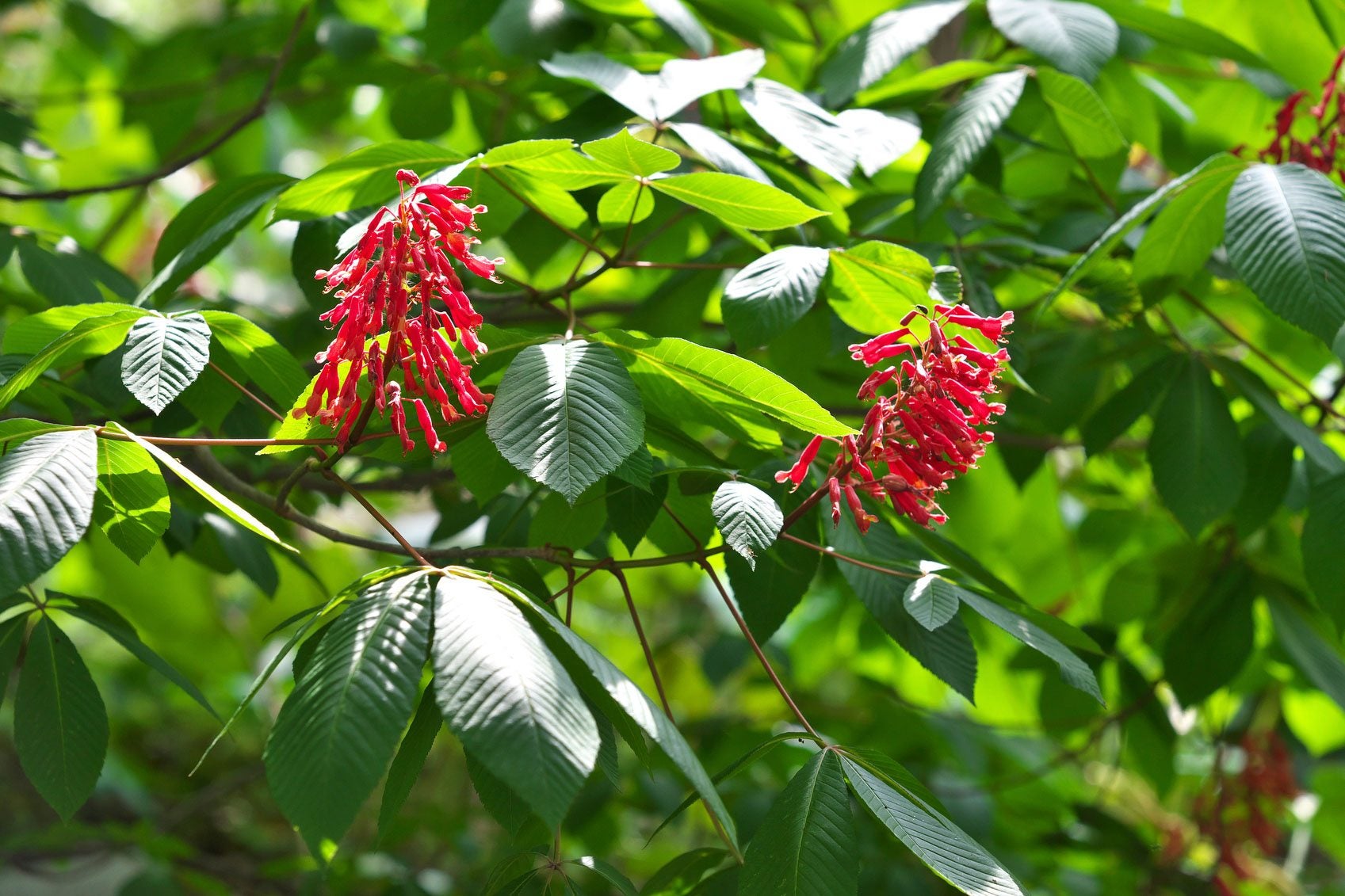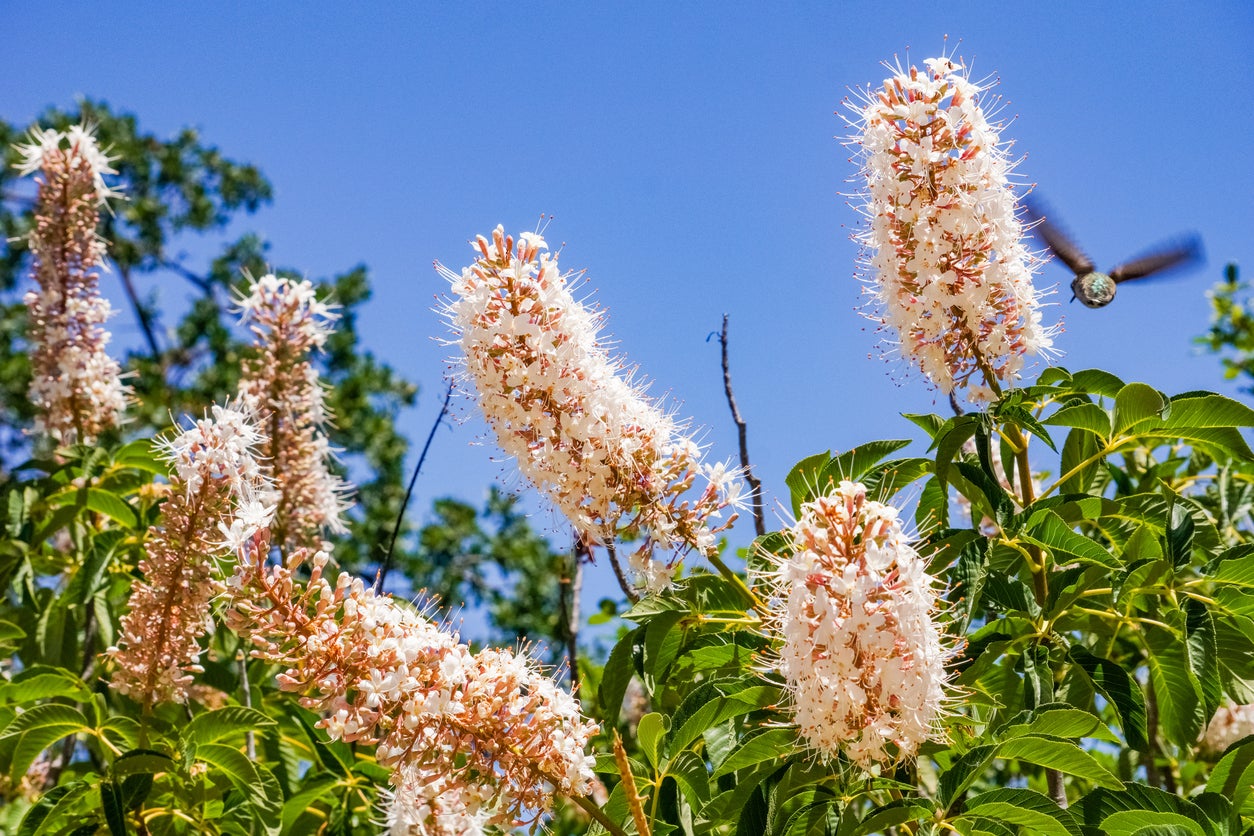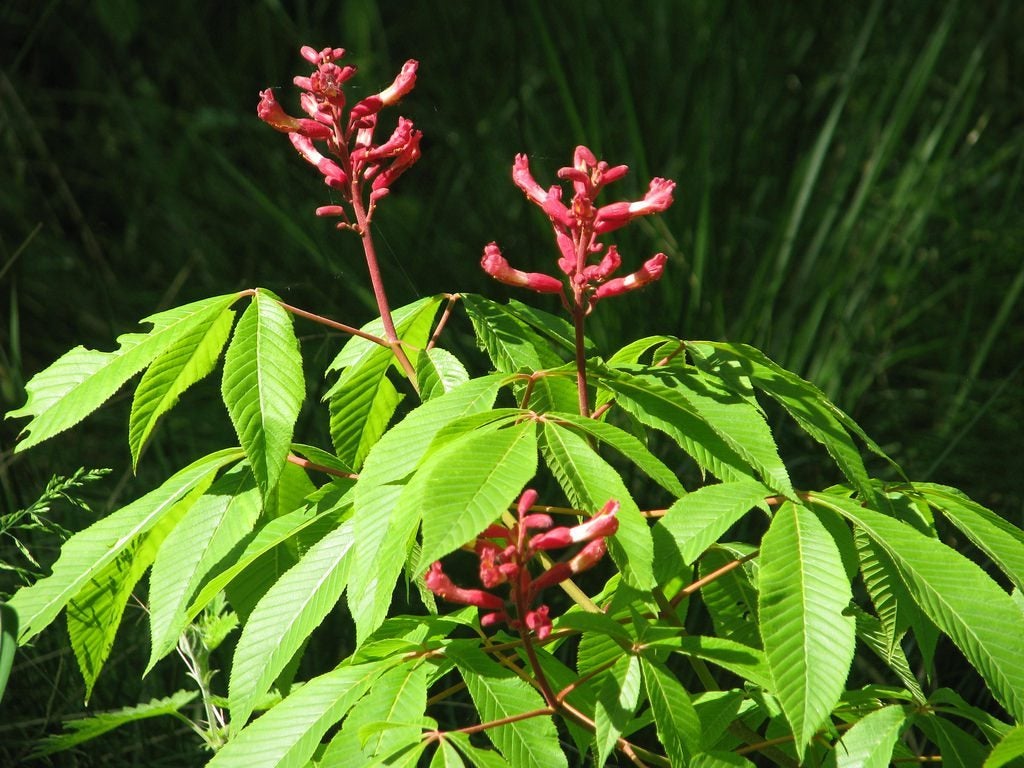Red Buckeye Tree Growth: Tips On Planting A Red Buckeye Tree


Red buckeye trees are relatively easy to care for, medium sized trees or shrubs that produce showy red flowers in the spring. They are a great choice for large, easy decoration along borders. Keep reading to learn more about red buckeye tree care and red buckeye tree growth.
Red Buckeye Tree Growth
What is a red buckeye tree? Red buckeye trees (Aesculus pavia) are North American natives from southern Missouri. They grow in USDA zones 4 through 8. For several weeks in the spring, the trees produce bright red panicles of tube-shaped flowers. The flowers have no real scent, but they are striking in color and very attractive to hummingbirds. Once the flowers fade, they are replaced by dry, round, orange fruits. These fruits are toxic to both animals and humans. Keep this in mind when choosing a planting location. The trees produce a lot of fruit, and when it drops it can be a nuisance to clean up and a real danger to pets and children. Red buckeye trees are deciduous, but their leaves aren’t showy in the fall. They barely change color and drop relatively early.
Red Buckeye Tree Care
Planting a red buckeye tree is relatively easy. The trees can be grown very successfully from seed and should bloom within three years. Red buckeye tree growth is best in rich soil that is well drained but moist. The trees do not handle drought well. They will grow in both shade and sun, but they’ll stay smaller and won’t fill out as nicely in the shade. In sun, the trees tend to grow between 15 and 20 feet (5-6 m.) in height, though they will sometimes reach as high as 35 feet (11 m.).
Gardening tips, videos, info and more delivered right to your inbox!
Sign up for the Gardening Know How newsletter today and receive a free copy of our e-book "How to Grow Delicious Tomatoes".

The only child of a horticulturist and an English teacher, Liz Baessler was destined to become a gardening editor. She has been with Gardening Know how since 2015, and a Senior Editor since 2020. She holds a BA in English from Brandeis University and an MA in English from the University of Geneva, Switzerland. After years of gardening in containers and community garden plots, she finally has a backyard of her own, which she is systematically filling with vegetables and flowers.
-
 Try The Trend – Turn Any Bed Into A Keyhole Garden With This Clever In-Ground Composter
Try The Trend – Turn Any Bed Into A Keyhole Garden With This Clever In-Ground ComposterKeyhole gardening is an efficient and sustainable practice that saves space. Get started on this DIY project quickly and easily with an in-ground composter.
By Bonnie L. Grant
-
 4 Superfast Composting Methods: Turn Waste Into Garden Gold In 30 Days Or Less
4 Superfast Composting Methods: Turn Waste Into Garden Gold In 30 Days Or LessTry the fastest composting methods to turbocharge your pile and transform kitchen scraps and garden waste into finished compost in just a few weeks.
By Mary Ellen Ellis
-
 California Buckeye Care: How To Plant A California Buckeye Tree
California Buckeye Care: How To Plant A California Buckeye TreeCalifornia buckeyes provide habitats for native wildlife and pollinators. With knowledge of a few California buckeye facts, homeowners can make a more informed decision on whether or not this tree is a good choice for them. Learn more about growing this tree here.
By Tonya Barnett
-
 Red Buckeye Trees: Tips On Caring For Dwarf Red Buckeyes
Red Buckeye Trees: Tips On Caring For Dwarf Red BuckeyesDwarf red buckeye trees are really more like shrubs, but no matter how you describe it, this is a nice, compact form of the buckeye tree that produces the same interesting leaves and upright spikes of spring flowers. Learn more in this article.
By Mary Ellen Ellis
-
 Buckeye Tree Planting: Information On Using Buckeye As A Yard Tree
Buckeye Tree Planting: Information On Using Buckeye As A Yard TreeOhio buckeye trees are the best known of the 13 species of buckeyes. Read this article for information about buckeye tree planting and some interesting buckeye tree facts. Click here to learn more.
By Jackie Carroll